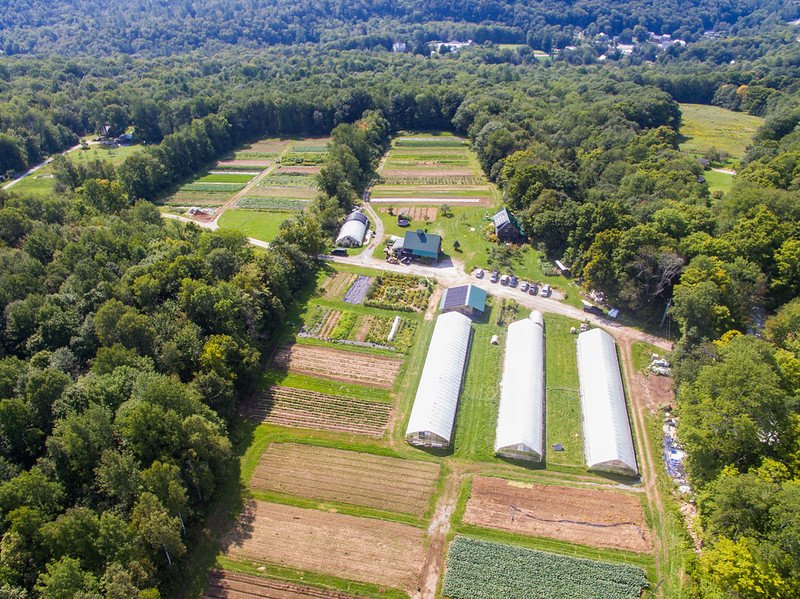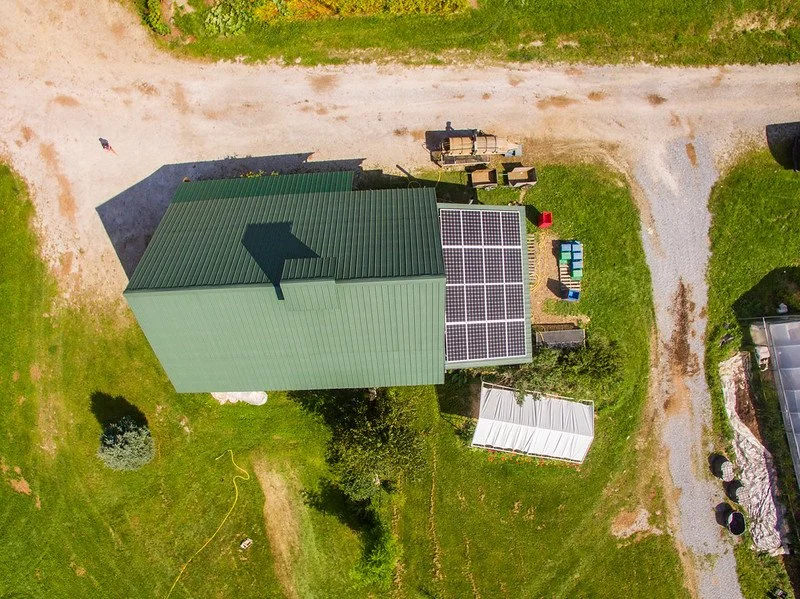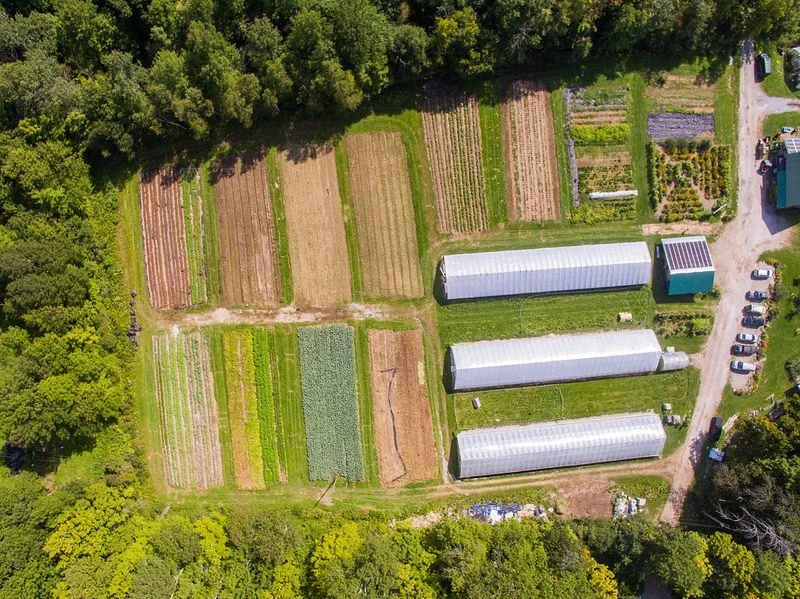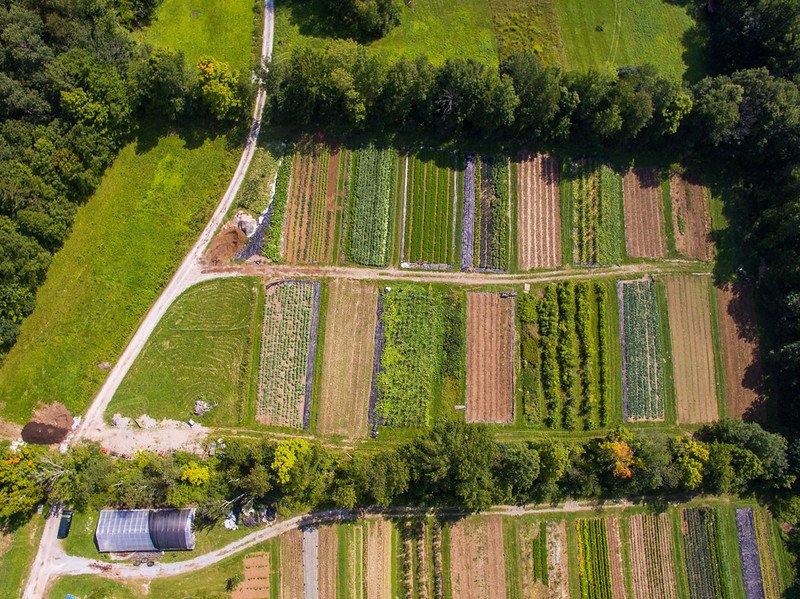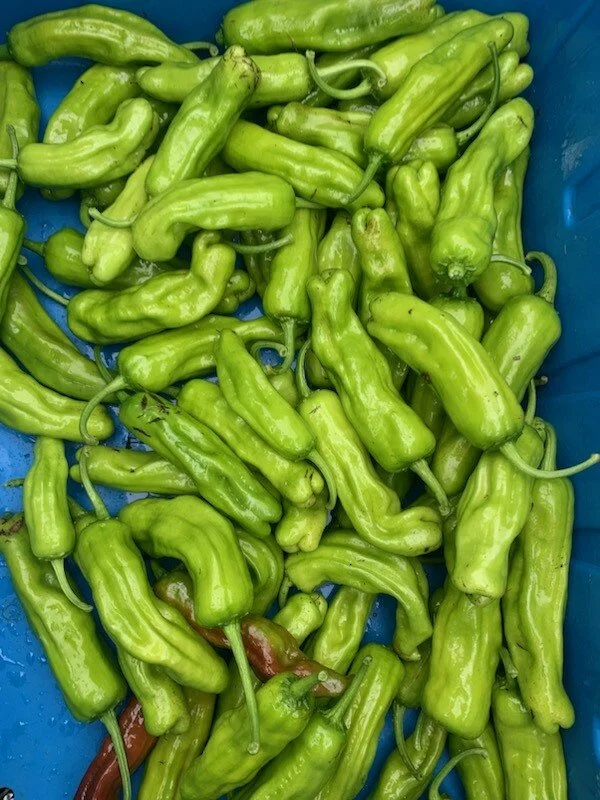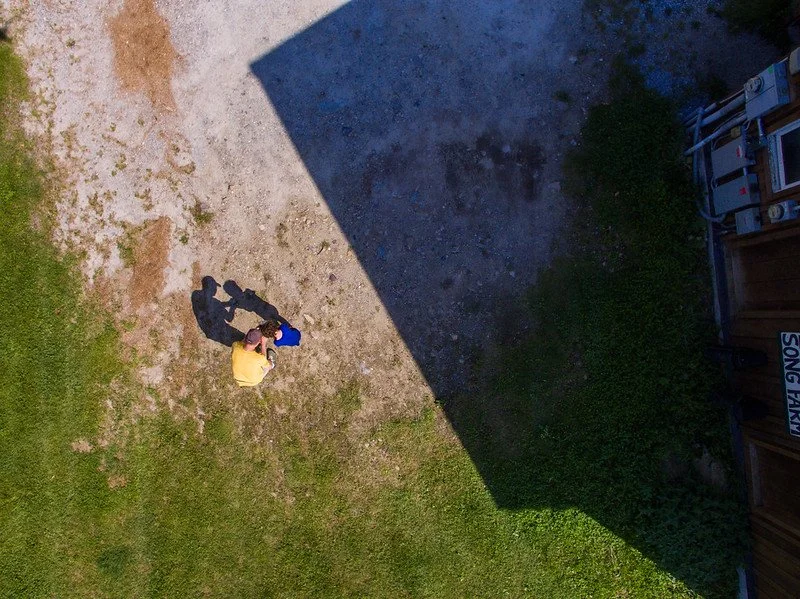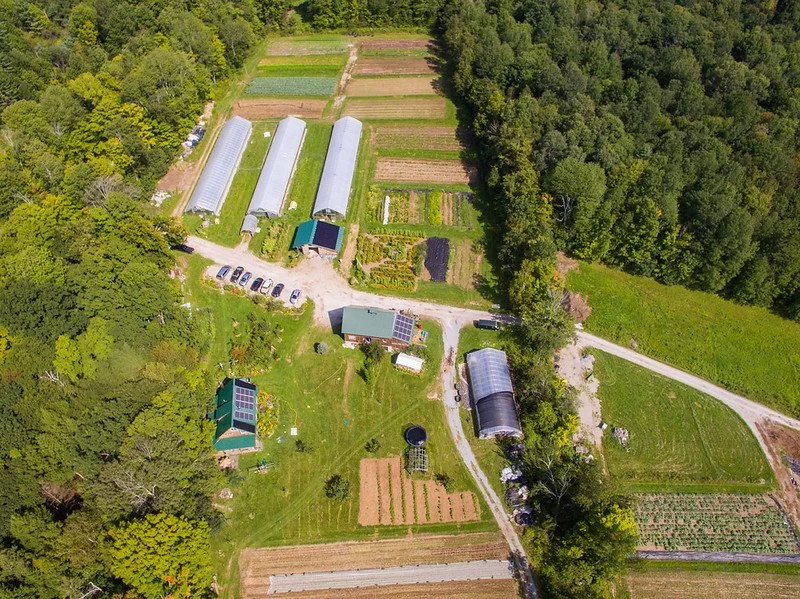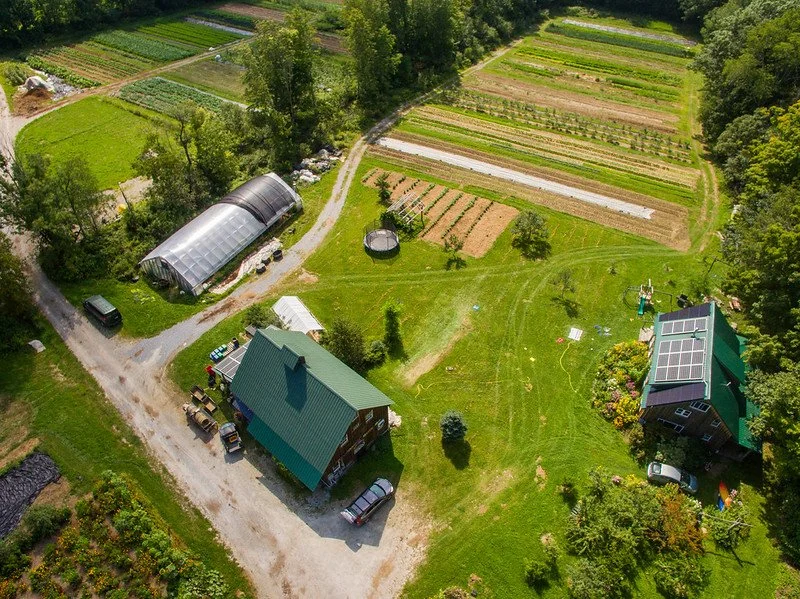13th Week of the Summer CSA Season: Week of September 3rd
Most of the veggie fields can be seen from this pic.... can you spot the mini goat huts from this high up? photo by Adam Ford
This Week’s Availability
This week we will have
Greens: head lettuce, baby lettuce, spinach, arugula, green curly kale bunches, lacinato kale bunches, rainbow chard
Roots: red beets, carrots, new yellow potatoes
Alliums: onions, garlic, scallions, garlic scapes, shallots
Fruiting Crops: slicing cucumbers, Japanese cucumbers, heirloom tomatoes, beefsteak tomatoes, cherry tomatoes, roma tomatoes, tomatillos, shishito peppers, sweet Italian Carmen peppers, red bell peppers, jalapeno peppers, spaghetti squash, husk cherries, green beans
Herbs and Miscellaneous: parsley, rhubarb, celery
We listed several items available for bulk purchasing at wholesale pricing on the online platform. This week we have heirloom tomatoes, roma tomatoes, beefsteak tomatoes, garlic scapes, garlic, onions, and frozen elderberries, available in bulk amounts if you do any preserving for winter. If you pick up at the barn and want to order any of those items in bulk, just send us an email.
K2, photo by Taylor Morneau
Vane and Taylor setting up the barrel washer, photo by Adam Ford
Farm News
This summer seems to be the summer of visiting faraway friends’ farms: I am writing this newsletter in the early hours of Saturday morning at the farm in Pennsylvania where Ryan and I started our first vegetable CSA operation. If you are unfamiliar with our farming history, back in 2008-2010 we lived and worked at Journey’s End Farm in Sterling Pennsylvania, which was a sleepaway farm camp for kids at the time, and where I spent my summers as a camper and a counselor, before returning with Ryan as a farmer. We started a much smaller CSA program there, and that was our first experience running a production vegetable operation. The beginner’s luck we experienced on magnificent soil, with two seasons of relatively easy going weather, and almost no overhead expenses, made us believe that at 25-years-old, we were ready to borrow money and start our own farm in a random place 5 hours away where we hadn’t built a community yet. (But I suppose it worked out well enough, so there’s one point for being young and grossly overestimating your own capabilities.) If you want to see a random post from the blog we kept way back then at the CSA in Pennsylvania, here is one where we describe commuting up to Vermont to start establishing the fields at our new property.
And if exploring farm history on the internet is something you enjoy, here is the old blog we kept when we made that leap from Pennsylvania to Vermont, and started the new place down on Route 103. Speaking of that spot, last week on August 28th, was what we observe as our “Irene-aversary.” Since we lost that first farm in 2011, we make time every year to spend time at the old place, to just be, observe, explore, remember, wonder, be in the river…. We must not have taken a walk last year, because this year was the first we time walked around the river there since the July 10th flooding last summer, and it was really wild to see the difference from an additional catastrophic flood to that spot.
When the Mill River carved a new course through our vegetable fields in 2011, while the state was still reeling on many levels from the shock of it all, one morning we woke up to the Agency of Transportation trucking in dozers and excavators to dig out and move the river back into its old channel. But we wouldn’t have been able to recover a field from the scoured out moon scape it had become, we felt like the river was where it wanted to be now, and that a future flood would just do the same thing again in that spot, so we asked them to stop. Since they had done some work, it meant that the main channel was still running through our previous veggies fields, but there was a new, smaller branch of the river running through the old channel as well from the work they did do before we got them to stop. But when we took a walk this week, we saw that the July 10th flooding did what Irene did, and the old channel was plugged up high with boulders, cobbles and sand, and the new channel was wider and deeper, with now just the single branch flowing. An interesting aspect of geomorphology is that as a river begins the process of eroding a new channel, the flow reduces in the old channel and boulders being rolled down the old channel slow down and stop, effectively plugging up the old channel much higher than visually makes sense when you walk around during a time of normal flow. After Irene, my college hydrology professor reminded me that a valley is present in a landscape because a river has moved throughout that valley over geologic time. So right now, the Mill River is where it is, and it will keep moving, as rivers do.
During our walk through the river, we found our old overgrown swim spot, with big thick trees growing where water used to flow for us to cool off in. It’s remarkable to see the first generations of the native plants that fill these dramatically altered landscapes after big weather events. Poplars, willows, golden rod, mullein, and locust were creating new forest spaces where we used to swim and cool off. It’s a beautiful reminder that the earth keeps growing and recovering in spaces that feel so “destroyed” through my anthropomorphic lens.
These trees are growing right where we used to swim in the old river channel, and they are so thick now... I wonder what year it will be that I won't be able to touch my hands to each other when I hug them, photo by Kara
Ryan walking down the old channel, which included the rock debris and also the green growth on the right, photo by Kara
I wish I could find the original photo that we took the day we closed on this property, but in the original picture, I am standing in front of a beautiful wide river, photo by Ryan
Well, that’s a lot about places we don’t farm anymore! Below there are a bunch of AWESOME pictures that our neighbor, Adam took with his drone of where we grow veggies now… so enjoy the arial photo tour below!
Have a great week!
-ESF Team: Ryan, Kara, Galen, Taylor, K2, Miguel, Katie, Vanessa, Evan, Bryan, Leah, and Cindy (and Sky and Soraya)
Weekly Recipe
The recipe below is written with yellow beets, but we are in between plantings of yellow beets, and it’s similarly wonderful with red beets. This is a common side dish in our house, so I thought I would highlight it this week.
spaghetti squash, photo by Adam Ford
gourd tunnel, photo by Taylor Morneau
baby romaine in about a month, photo by Adam Ford
Bryan and Cindy, photo by Adam Ford
shishito rows, photo by Taylor Morneau
flowers, photo by Adam Ford
celery, photo by Adam Ford
beefsteak, photo by Adam Ford
soaking pea seed before seeding for pea shoots, photo by Adam Ford
goats grazing between the tunnels, photo by Adam Ford
It's fun to see all the solar panels on all the different buildings, photo by Adam Ford
that barn is home to the wash station, 3 walk in coolers, a display cooler, our packing zone, the root cellar, and all our supplies, photo by Adam Ford
tunnel field, photo by Adam Ford
flower garden looks so tidy from up here, photo by Adam Ford
most of the open field and some of the barn field, photo by Adam Ford
so much action happens in this zone, photo by Adam Ford
fall napa protected from insects, photo by Adam Ford
wholesaling tomatoes, photo by Adam Ford
bin of shishitos, photo by Taylor Morneau
nasturtium, photo by Adam Ford
shishitos and picnic peppers, photo by Adam Ford
elderberries, photo by Adam Ford
Adam teaching Soraya how to use a drone for pictures, photo by Adam Ford
the line of dying grass is from our kids' slip and slide habit... lucky kiddos, photo by Adam Ford
the colors and shapes and patters are wonderful from this view, photo by Adam Ford
hard to believe that when we bought this piece of land, the only infrastructure on it was that main driveway above where the barn is now, photo by Adam Ford
tunnel field, photo by Adam Ford
higher above the flowers and some the the nearby gardens, photo by Adam Ford
barn field and some of the open field, photo by Adam Ford
just above the top of the barn field, photo by Adam Ford

